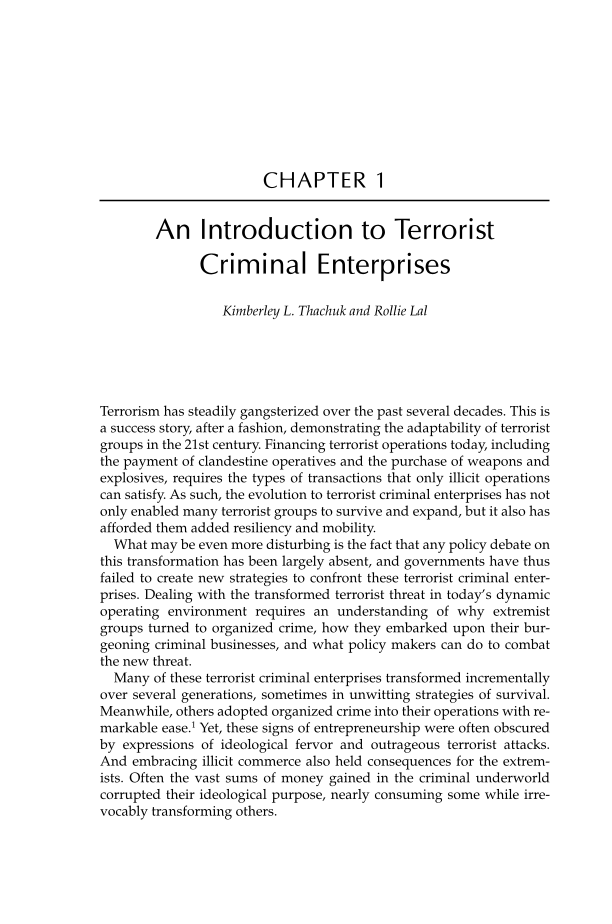CHAPTER 1 An Introduction to Terrorist Criminal Enterprises Kimberley L. Thachuk and Rollie Lal Terrorism has steadily gangsterized over the past several decades. This is a success story, after a fashion, demonstrating the adaptability of terrorist groups in the 21st century. Financing terrorist operations today, including the payment of clandestine operatives and the purchase of weapons and explosives, requires the types of transactions that only illicit operations can satisfy. As such, the evolution to terrorist criminal enterprises has not only enabled many terrorist groups to survive and expand, but it also has afforded them added resiliency and mobility. What may be even more disturbing is the fact that any policy debate on this transformation has been largely absent, and governments have thus failed to create new strategies to confront these terrorist criminal enter- prises. Dealing with the transformed terrorist threat in today’s dynamic operating environment requires an understanding of why extremist groups turned to organized crime, how they embarked upon their bur- geoning criminal businesses, and what policy makers can do to combat the new threat. Many of these terrorist criminal enterprises transformed incrementally over several generations, sometimes in unwitting strategies of survival. Meanwhile, others adopted organized crime into their operations with re- markable ease. 1 Yet, these signs of entrepreneurship were often obscured by expressions of ideological fervor and outrageous terrorist attacks. And embracing illicit commerce also held consequences for the extrem- ists. Often the vast sums of money gained in the criminal underworld corrupted their ideological purpose, nearly consuming some while irre- vocably transforming others.
Document Details My Account Print multiple pages
Print
You have printed 0 times in the last 24 hours.
Your print count will reset on at .
You may print 0 more time(s) before then.
You may print a maximum of 0 pages at a time.





































































































































































































































